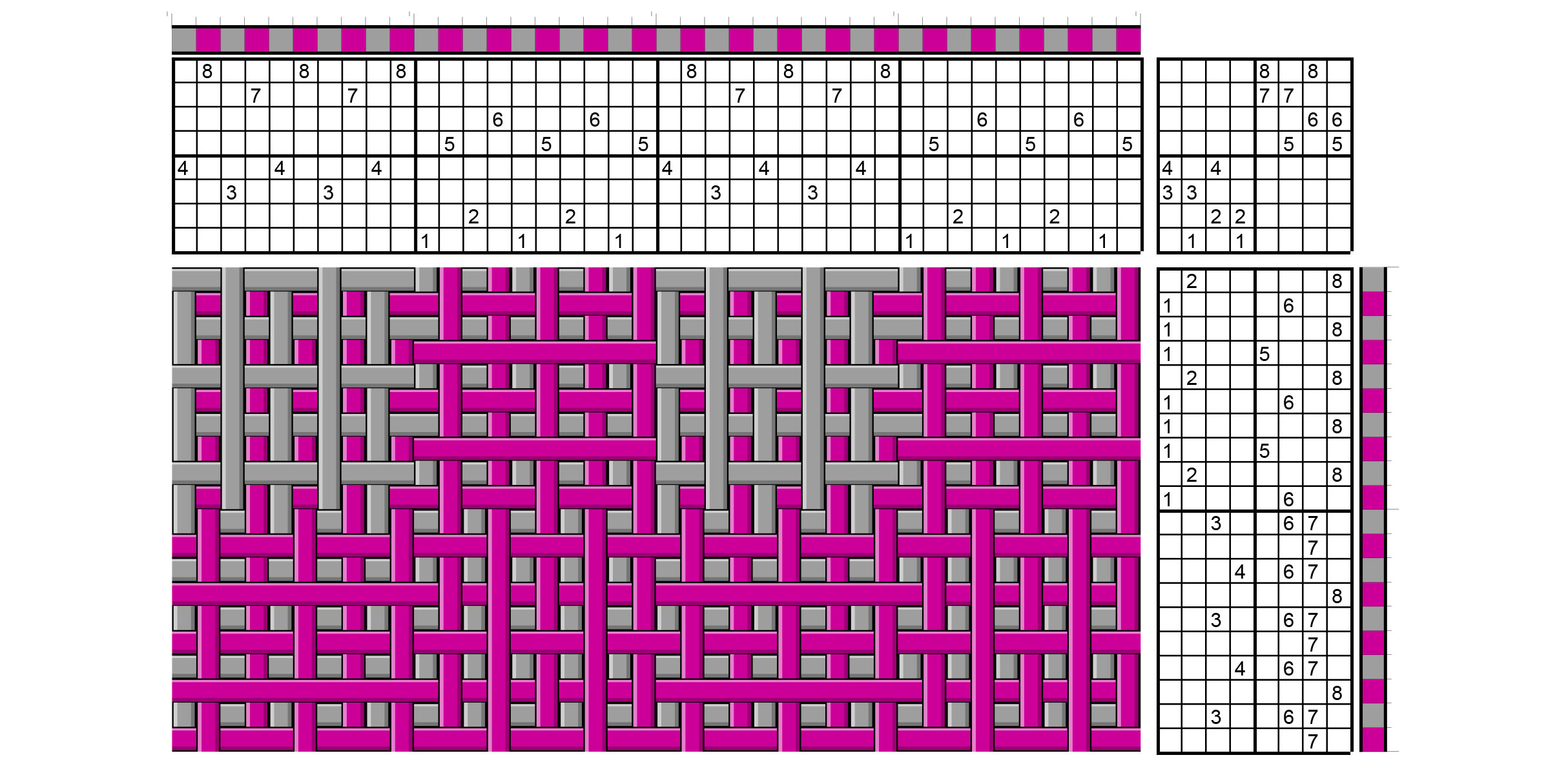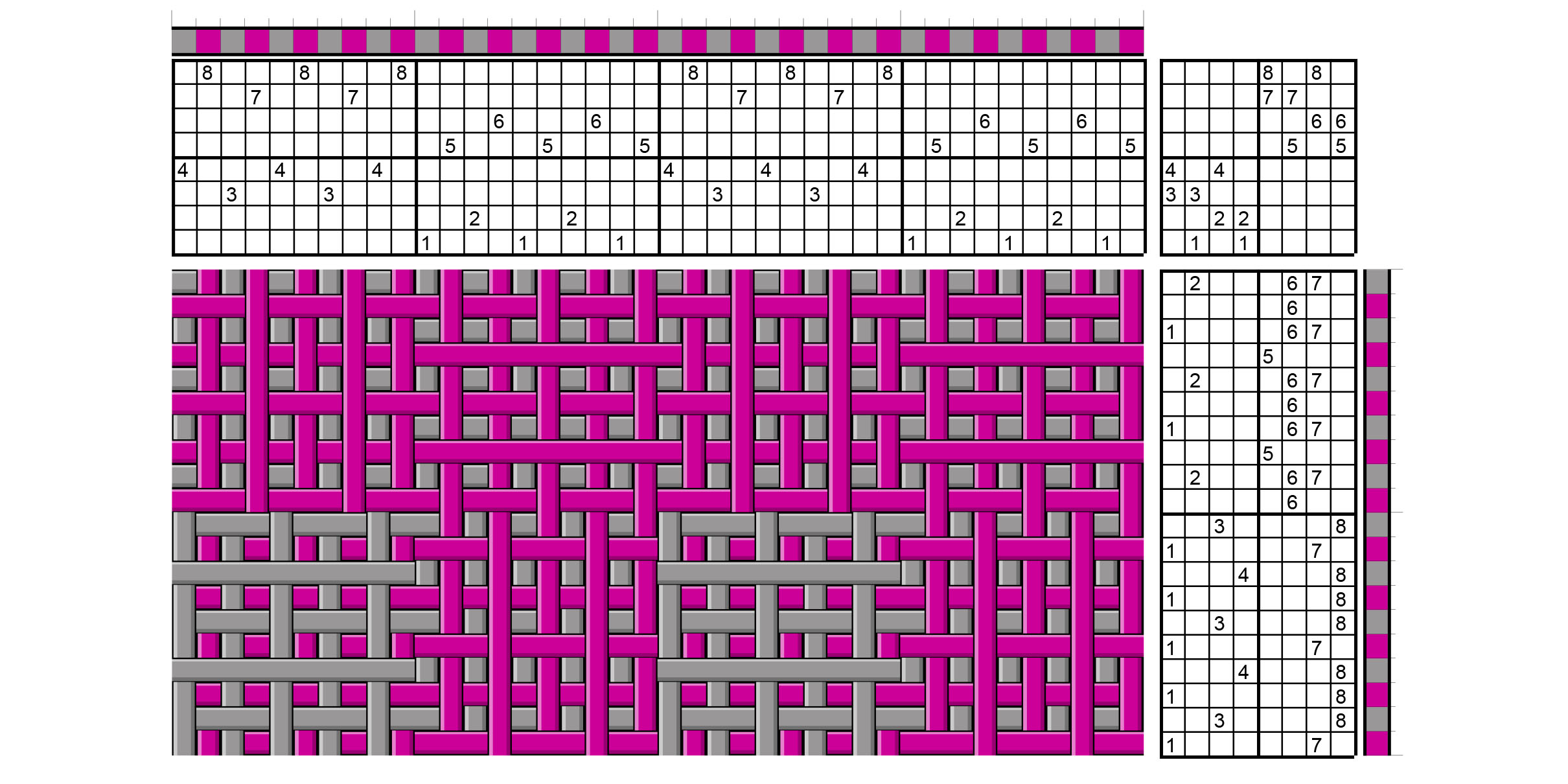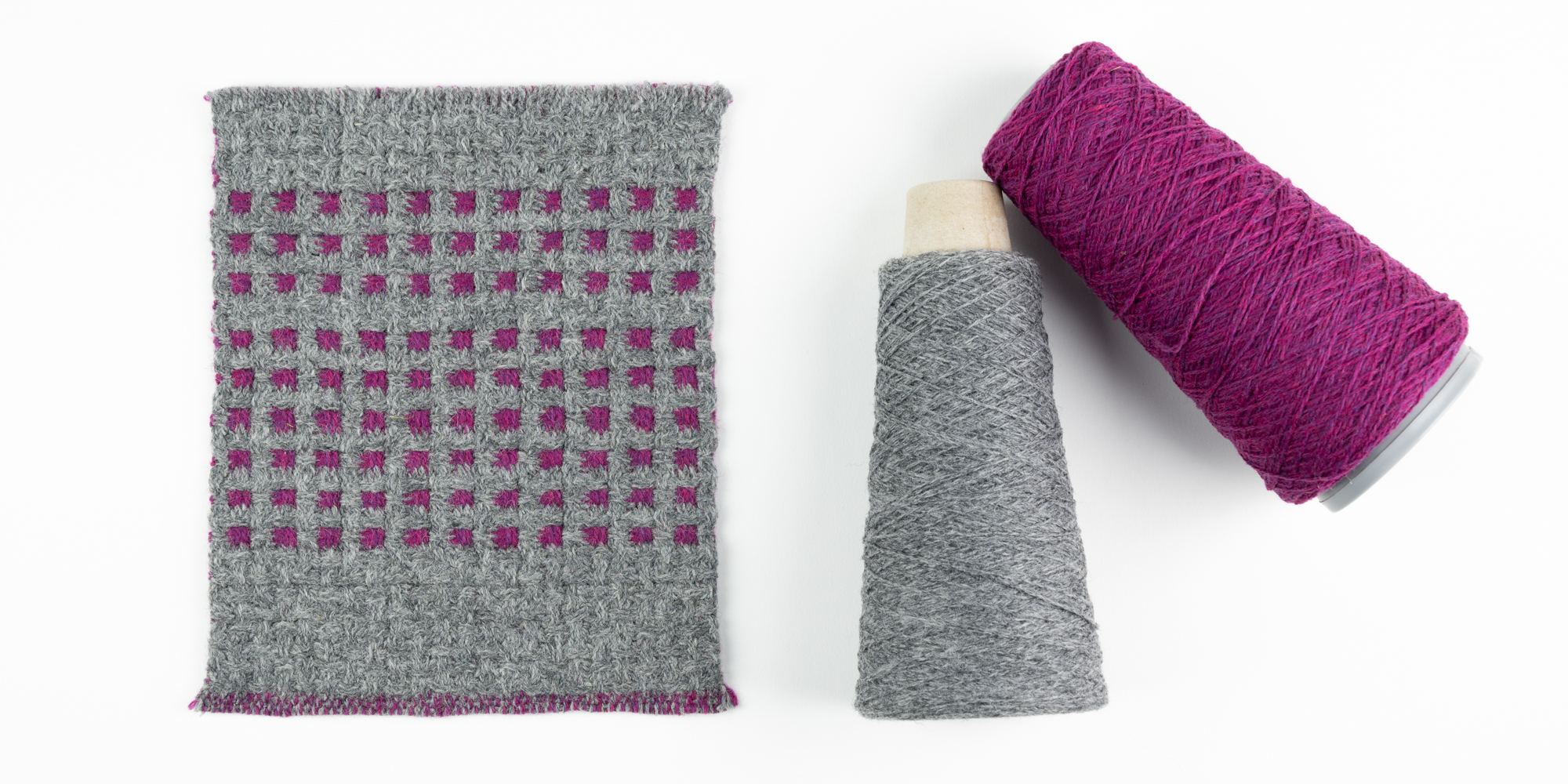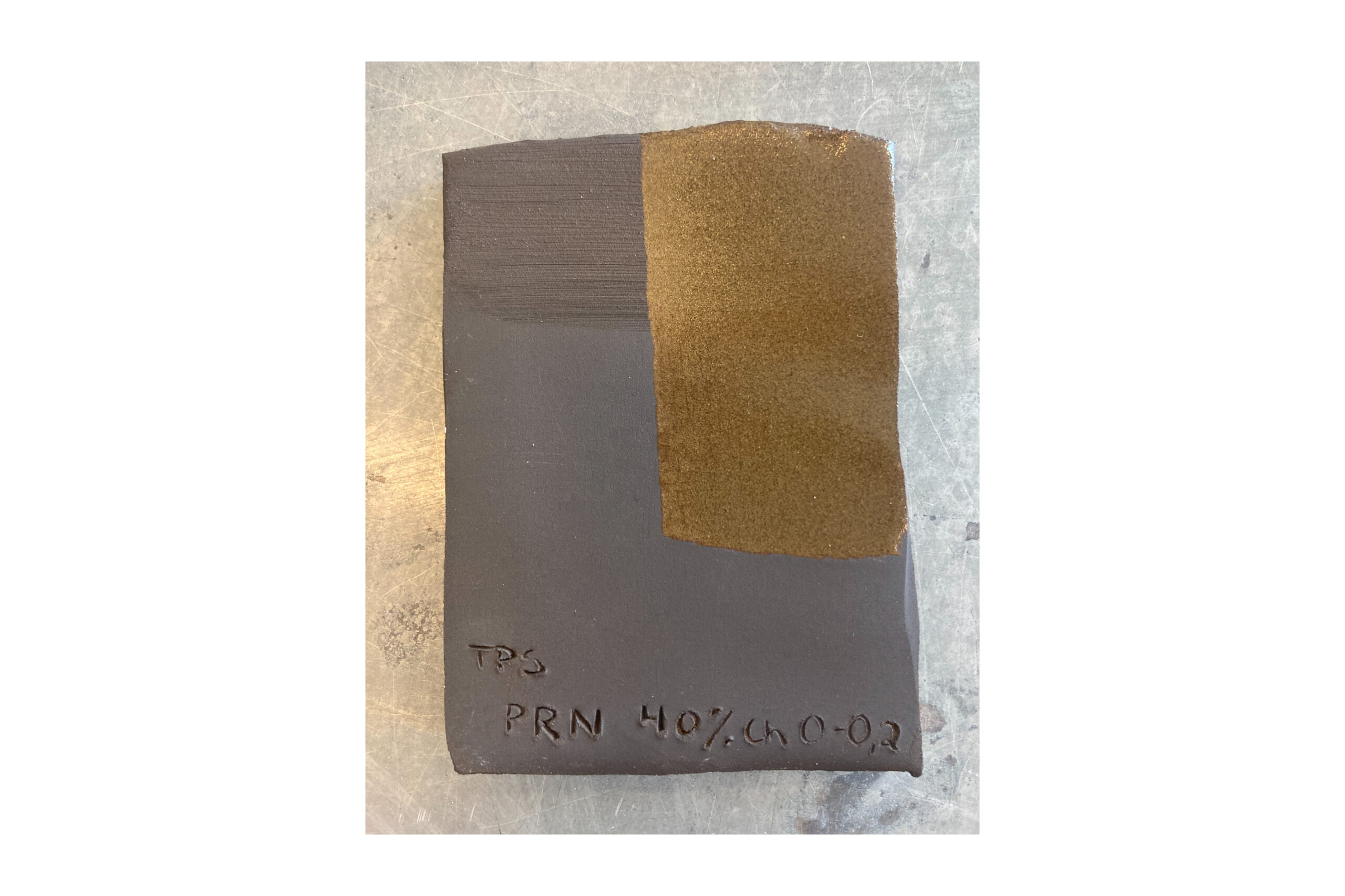Properties & Qualities
Application
Accessories Clothing Furnishing
Qualities
2D Colourful Flexible Textured / tactile
Colour
Grey Pink
Sample Information
Date of Creation
February 7th, 2023
Dimensions
180 mm x 220 mm x 5 mm
Weight
25 g
Culture & Context
| Double-weave, in its most general sense, is a process of weaving two layers of cloth simultaneously. The interchange of these layers allows the weaver to create complex structures and patterns. Double-woven fabric dating back to the first millennium BCE has been found in Peru and in China. From these centres, knowledge of the structure spread around the world and has given rise to many different traditions of its use. In the UK it is perhaps best known in the form of Welsh ‘tapestry’ blankets, the double-layer structure being an excellent insulator.The double huck grid shown here is also eminently suitable for blankets. Woven with a finer yarn, it would make a fabric with excellent drape. |
Process & Production
| For a handweaver the double-weaving process can be achieved through loom-control (that is, by assigning warp ends to shafts and manipulating the shafts) or by hand, or using a combination of the two approaches. This sample is woven on an 8-shaft loom, with each layer requiring four shafts. |
Recipe Details
| The warp is made from two colours, magenta and grey, of 2/11 Nm Shetland-style lambswool threaded as shown in the accompanying draft and sleyed 3|4|3|0 in a 10 dpi reed for an overall sett of 25 epi.The same two colours are used in the weft and the web is beaten to square.Two treadlings are shown. Both will place the magenta layer on top, with grey squares inset, and the opposite colour combination on the back. One draft presents the grey squares with warp floats, the other with weft floats.After weaving the fabric is washed, lightly fulled, and pressed to finish. |
Credits
Craft Maker
Cally Booker
Library Contributor
Cally Booker
Photographer
Stuart Booker



















